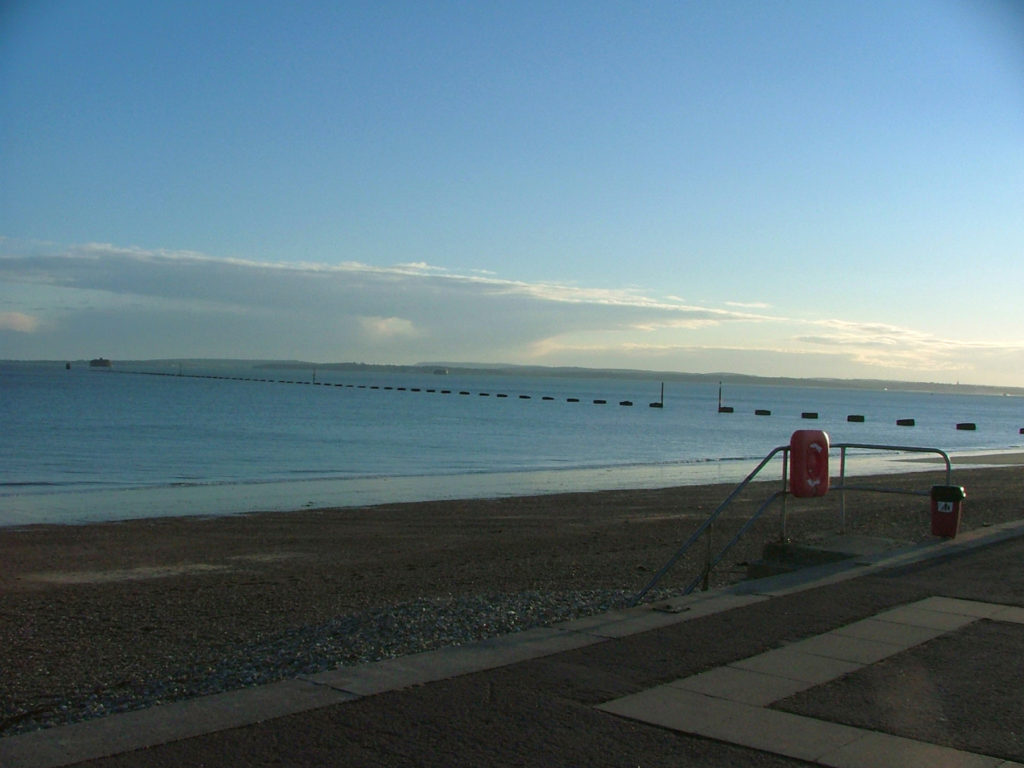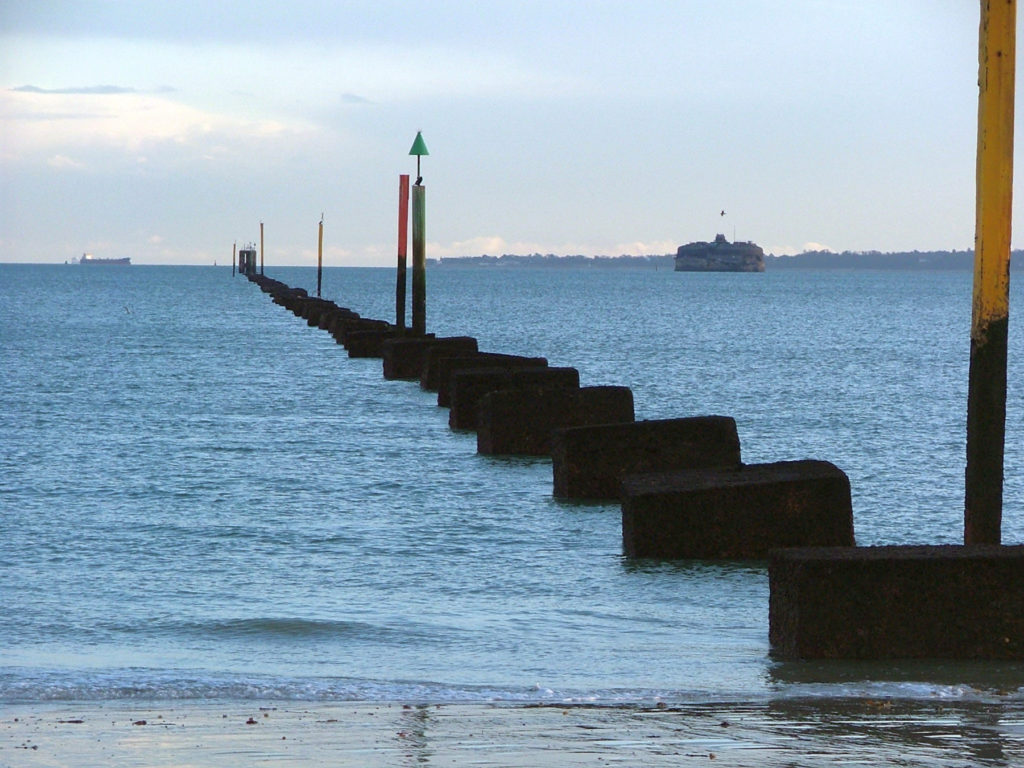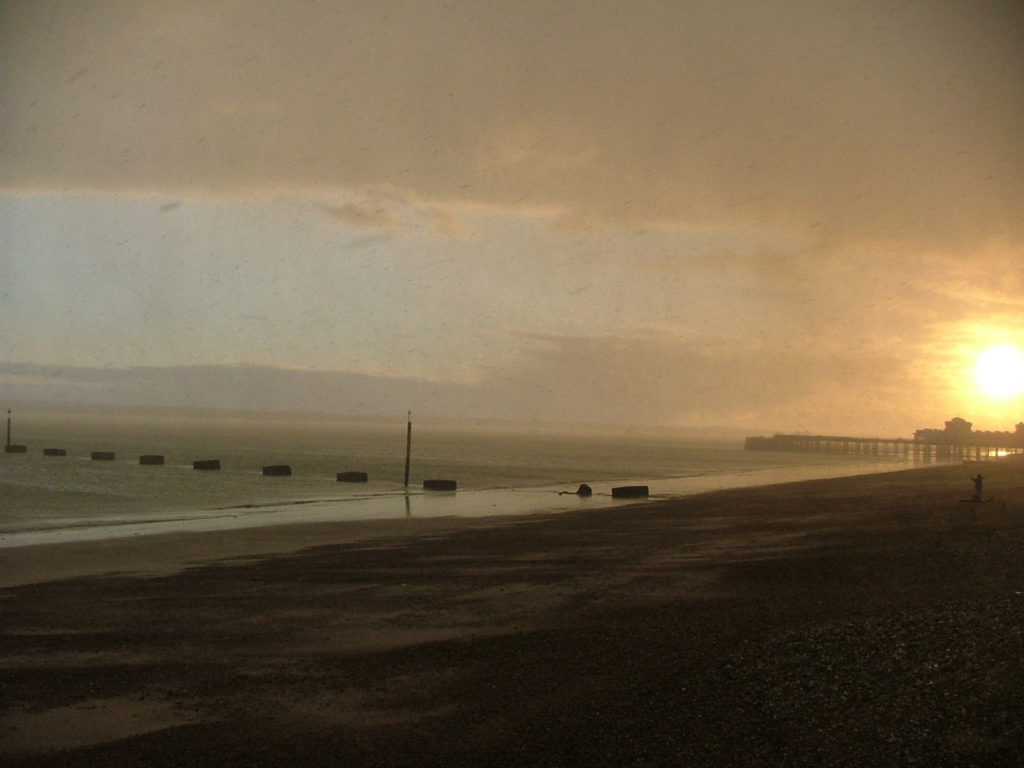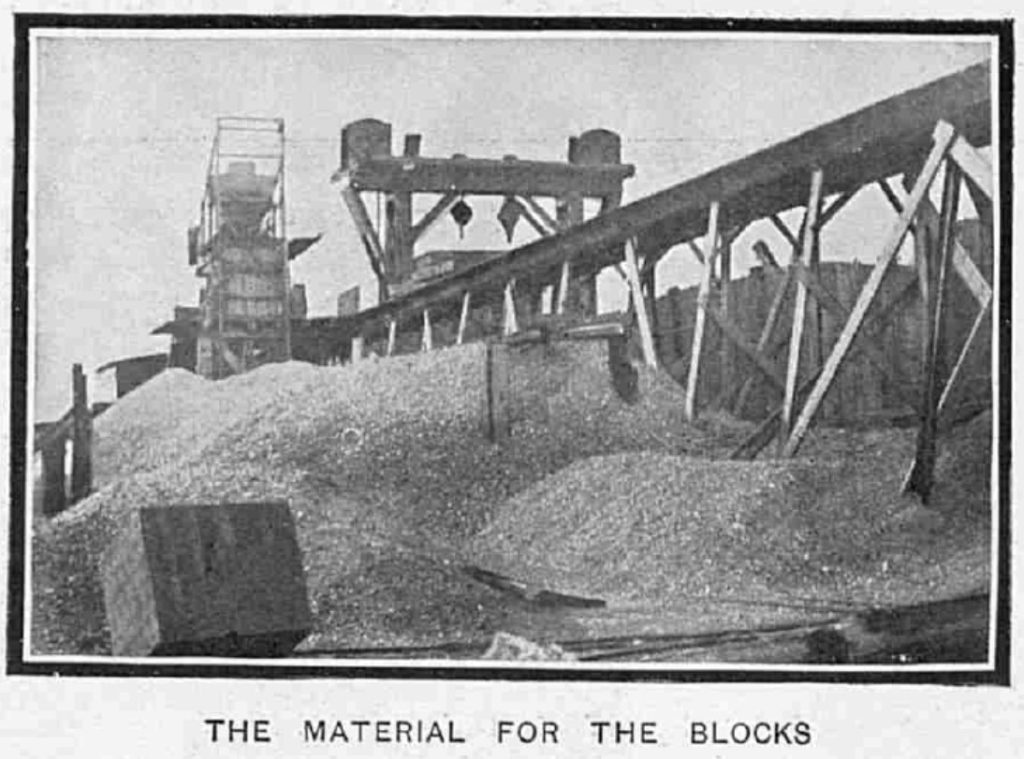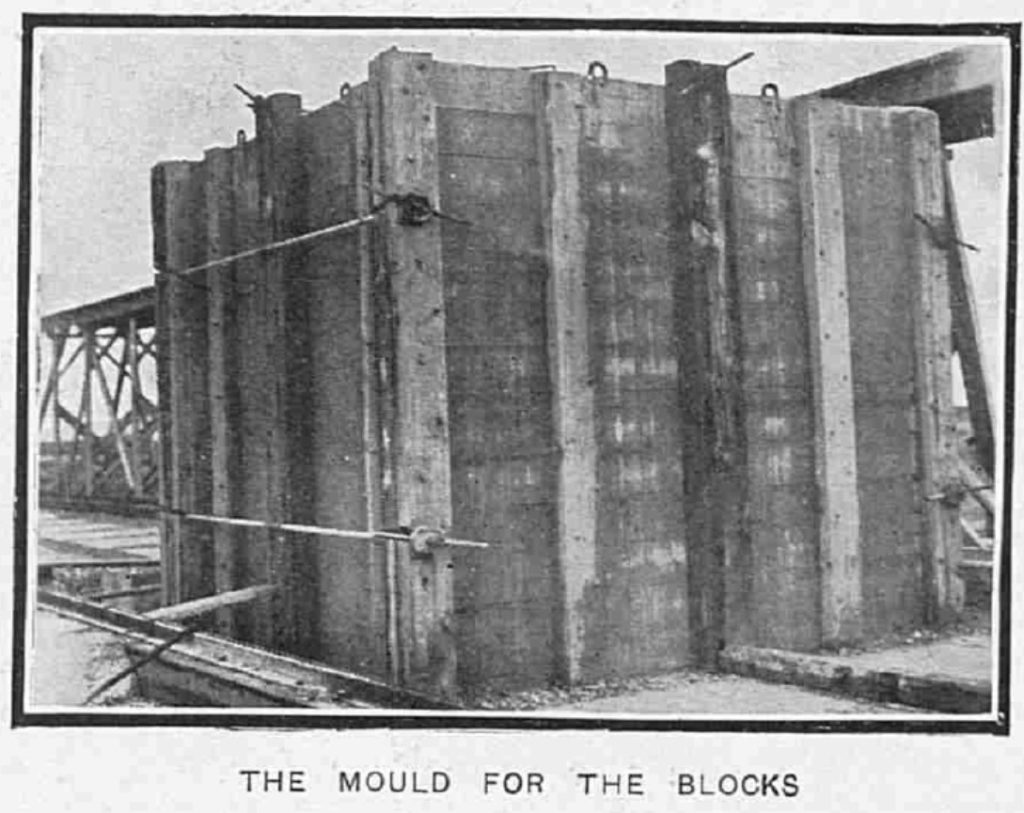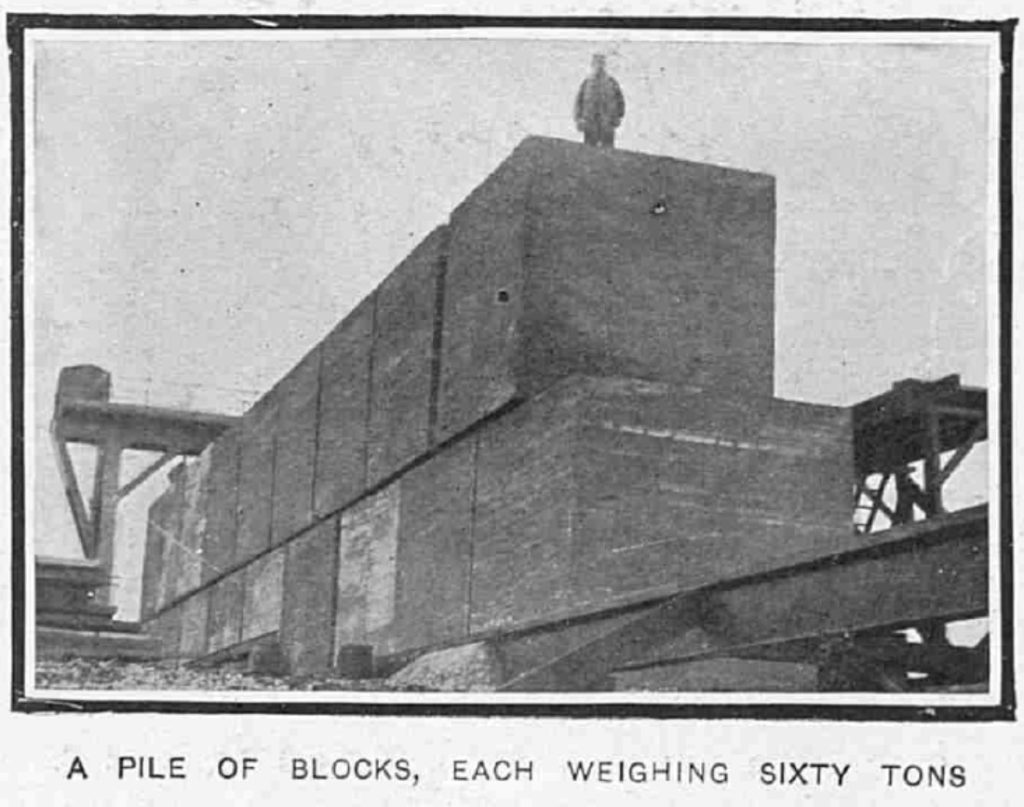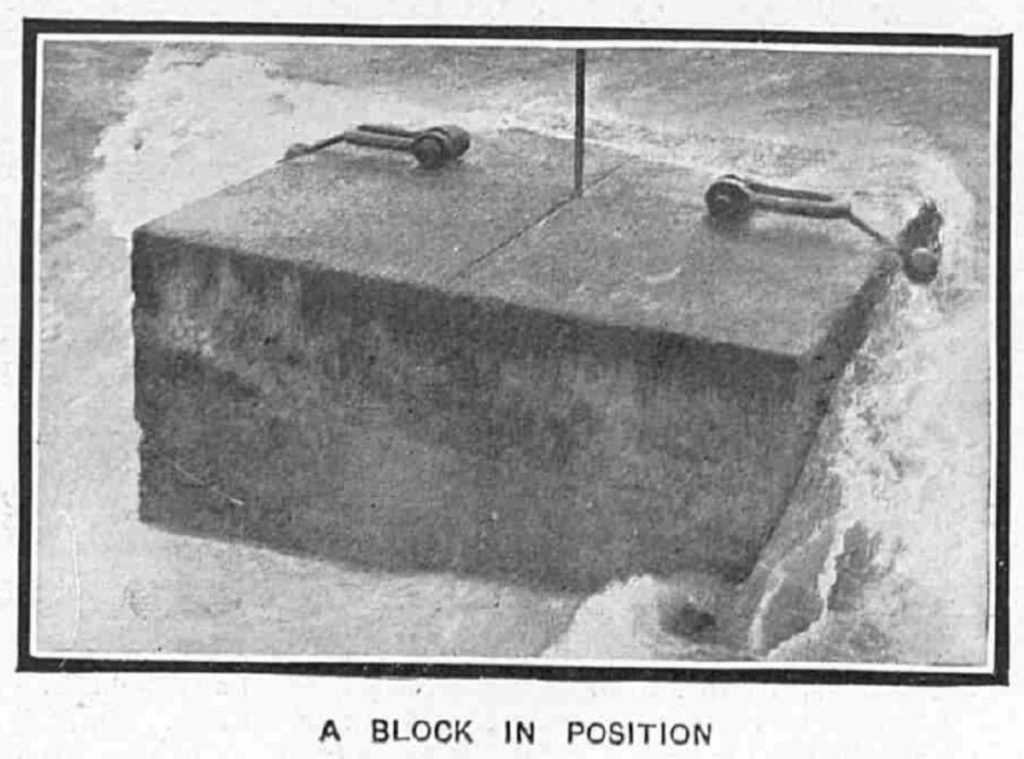
Stokes Bay has been the location of many brief episodes in history which have long been forgotten and one such obscure but, at the time, very important undertaking has never been widely reported before now. That of the construction of the Spithead Breakwater. Many people have passed over the site of this monumental undertaking without knowing its story. There is nothing to mark it and no interpretation board to explain its significance. Perhaps we can put that right.
Prior to World War One, which was much anticipated, an attack on Portsmouth Harbour was expected with the possibility of enemy block ships sailing close to Southsea between the Spithead Forts and the beach. Their intention would be to sink heavy ships in the channel at the harbour mouth thereby denying our Channel Fleet a means of accessing and exiting Portsmouth Harbour and dockyard. This would a disaster of significant proportion. In order to prevent this a grand scheme, which became known as ‘The Spithead Breakwater’, was proposed. Earlier in 1861/62 following the report of the Royal Commission on the Defences of the United Kingdom, Mr W. A. Brooks had proposed the building of a continuous wall from the eastern side of the entrance to Langstone Harbour in a southerly direction to the edge of Horse Sand. This idea was not acted on.
The Owen Report of the Committee on Armament of Home Ports dated 1905, stated that ‘In making these recommendations the Committee have taken into consideration a proposal, now before the Admiralty, to sink a line of concrete blocks from South Parade pier towards Horse Sand Fort.‘ A monumental undertaking for the time. Nothing like it had been attempted before. The blocks would not only stop ‘block’ ships but would also help in the defence against light, fast, torpedo craft passing north of the Horse Sand Fort across the shallows of the Horse and Dean Sands. These sands extend from near Southsea Castle out to Horse Sand Fort. They are very extensive and at low water only vessels of very light draught such as destroyers could pass over them. Between Horse Sand Fort and No Man’s Land Fort is the deep channel used by warships and merchant vessels. On the island side of No Man’s Land Fort is another sandbank over which it was considered impossible for any vessels to pass. By making all vessels pass between the two Spithead Forts it would negate the danger of an enemy getting unobserved into the harbour.
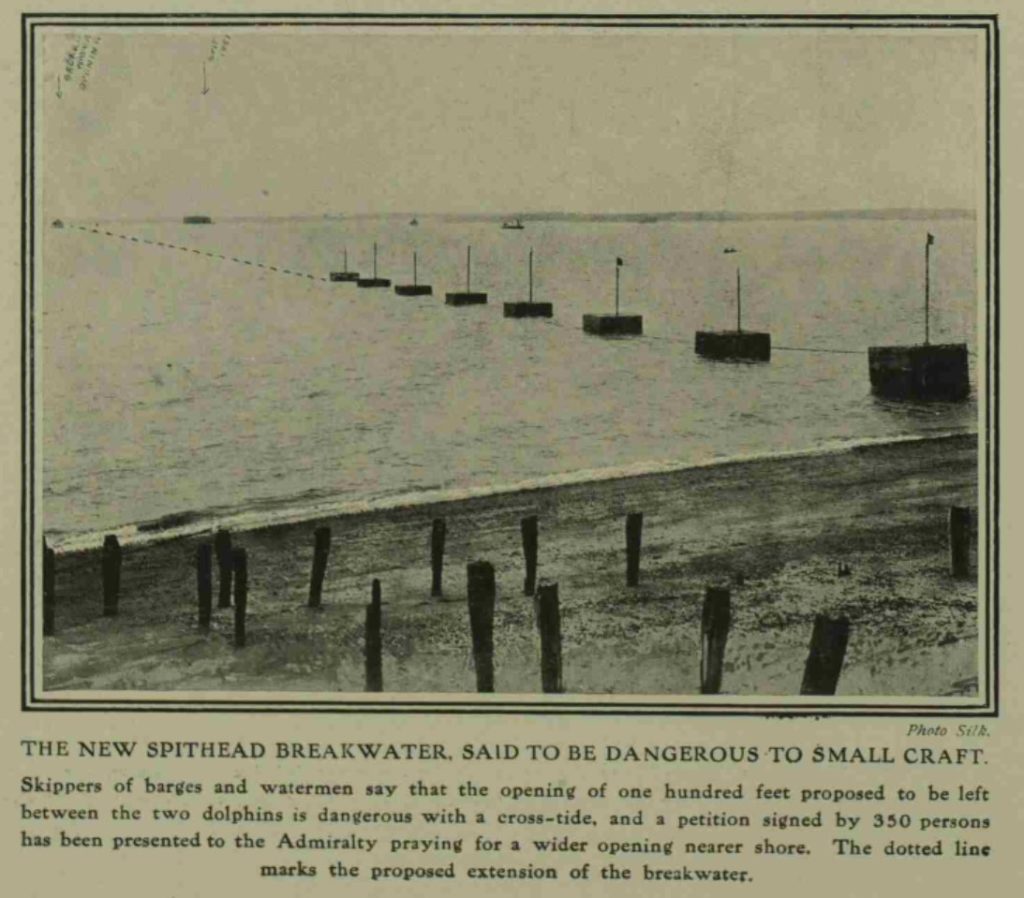
The concrete blocks required for the breakwater were 10ft cubes and weighed 60 tons each. They were to be placed on the seabed running in a straight line from Southsea Beach to Horse Sand Fort, a distance of 3,363 yards. The blocks were to be laid 100ft apart. A small 100ft wide opening for local vessels was left in the line, marked on either side by a dolphin with a warning light or beacon on top. Spare blocks were kept to allow this entrance to be closed in time of emergency.
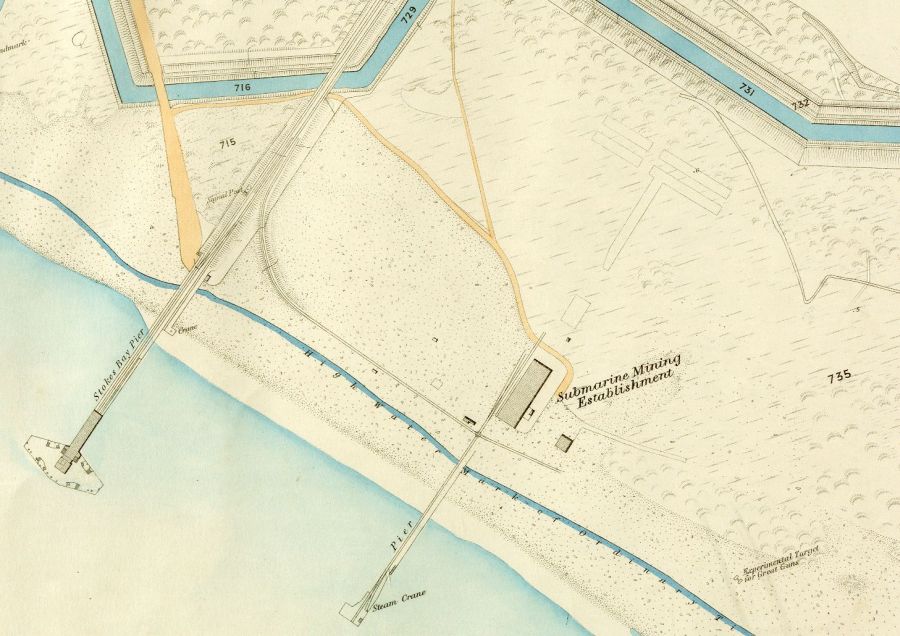
The blocks were constructed by the Royal Engineers on the beach at Stokes Bay in the yard formerly used by the great engineer J. T. Leather in the 1860s to build the Spithead Forts and the nearby Fort Gilkicker. After Leather relinquished the yard it reverted back to the owners, the War Department, and was then used until 1906 by the Submarine Miners branch of the Royal Engineers. When the responsibility for Submarine Mining was passed over to the Royal Navy in 1906 the establishment at Stokes Bay was retained by the Royal Engineers and it was here that the blocks were constructed.
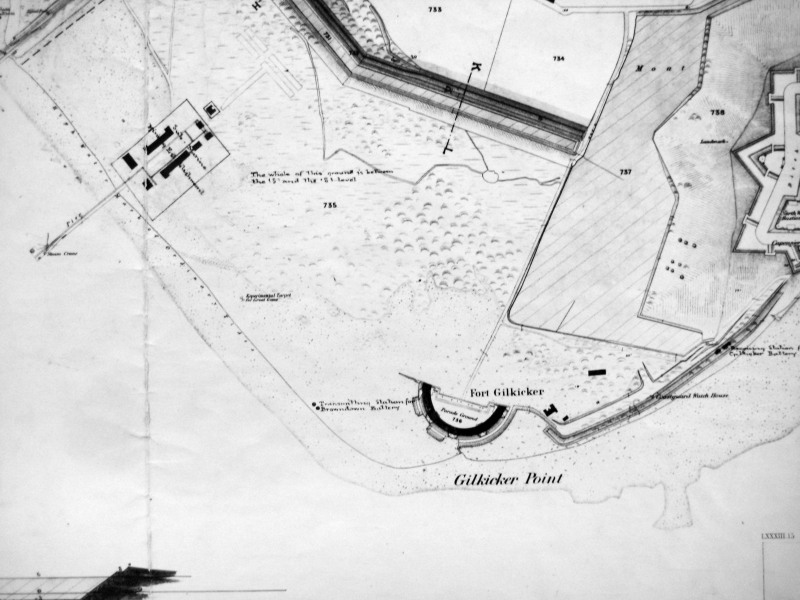
The later Submarine Mining Establishment on the site where the yard was situated 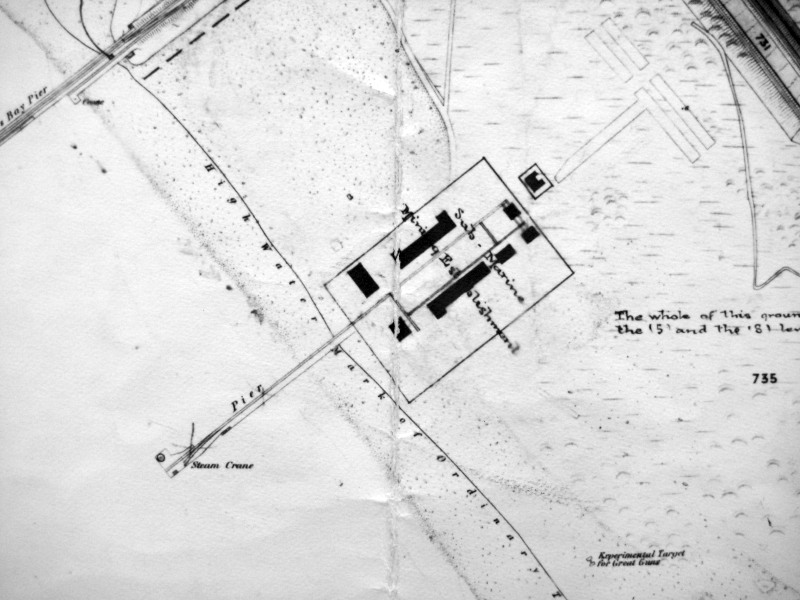
The dotted markings beyond the establishment show the site of the construction yard.
The work at Stokes Bay was carried out under the direction of the Works Department of Portsmouth Dockyard. The yard on the east side of Stokes Bay Pier, between it and Fort Gilkicker, was equipped with a large pier for landing the materials, cement and shingle. A large ‘Goliath’ manual travelling crane capable of lifting about seventy tons and a steam concrete mixer was erected on the site. On 11 January 1908 it was reported that twenty-six of the blocks had already been made. They were moulded in frames of wood and by means of the travelling crane they were individually carried to the pier-end and deposited on the vessel which was specially constructed for conveying them, one at a time, to Spithead, depositing them on site as required. The vessel was built with a shallow draught and a square stern to enable it to get close to the pier to facilitate the loading. When tested it was found that additional winches were required and these were fitted in Portsmouth Dockyard. As the vessel had no propelling power of her own it was towed. Twenty to thirty men were employed at the yard, each block weighing 64 tons when wet and taking a week to dry. When work was in full swing the steam mixer could produce blocks in a few hours for each.
The Army and Navy Gazette reported 8 February 1908 that ‘A specially constructed lighter, built by Messers. Day and Summers at Southampton for the purpose of laying the concrete blocks across the Horse Sand Shallows in a line between Southsea Castle and Horse Sand Fort is now being fitted in Portsmouth Dockyard, with further appliances which have been found necessary. A pile driver has been erected on the stern of the vessel in order to drive the piles of the beacons which will be placed on either side of the narrow entrance to be left open for the use of small local craft using Portsmouth Harbour. The lighter is fitted with steam power for lifting the heavy concrete blocks. A considerable number of these blocks, constructed under the supervision of the Works Department of Portsmouth Dockyard, have been made at Stokes Bay. They will be shipped from a pier into the lighter, and as soon as the necessary pile driving is completed the work of laying them will begin. The operations are expected to occupy about two years.‘
On completion of the scheme the local press reported on a number of collisions with the blocks. The Army and Navy Gazette stated in November 1909 that ‘..vessels have collided with the submerged blocks at Portsmouth. The opening between the dolphins is about 100 ft. in width. It does not admit of barges beating through against the wind and tide and these must round the Horse Sand Fort causing in consequence some delay. But occasions are rare when this course cannot be followed. It is not proposed to make another opening for the passage of coasting traffic. The opening is already marked day and night.‘
When the breakwater was finished the Stokes Bay Yard fell silent once more only to be re-used by the Royal Engineers as their School of Electric Lighting, where searchlights for AA defence were developed and men were trained to use them. The blocks from Horse Sand Fort to Southsea beach remain in place today and are marked on mariner’s charts as an obstacle. They can be seen at low water stretching out into the sea. Visitors pass by and wonder why they were put there. The blocks from No Man’s Land to the Isle of Wight have been removed. All large draught shipping moving up and down the Solent still has to use the deep water channel between the two large Spithead Forts.
Once again Stokes Bay was the scene of a great undertaking that has passed, unnoticed, into obscurity with nothing to mark its impact on the history of the area.
